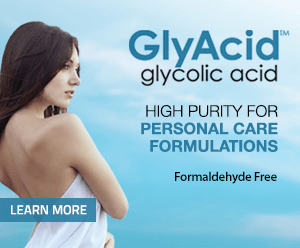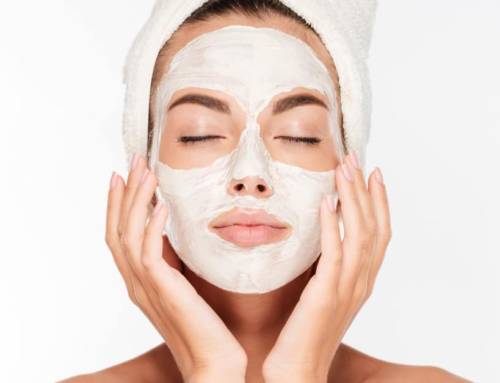Spotless Skin with Glycolic Acid
September 3, 2020

“Glycolic is one of the cornerstones of dermatology because it truly can change the landscape of skin by helping improve tone, texture, and fine lines, and it can be used on all skin tones and types—that’s why it’s so popular,” Jeanine Downie, M.D, founder of Image Dermatology, told Cosmopolitan.
Glycolic acid is a superior, affordable option for reducing dark spots quickly, thanks to its excellent exfoliating capabilities.
Seeing spots
Discolored or darkened spots on the face occur when abnormally pigmented cells cluster together on the skin’s surface.
One of the top causes of spots on the facial skin? Damage from UV rays. Melanin, the pigment responsible for the color of hair, skin, and eyes, is triggered into production by UV radiation. UV radiation stimulates melanocytes, the cells that synthesize melanin, which then kicks melanogenesis into action.
Additionally, acne and breakouts can leave reddened or darkened spots behind on the face, long after a blemish disappears. Picking at blemishes is also a fast track to creating darkened spots on the skin.
Finally, dark or red facial skin spots can be caused after an injury or when a wound heals, or if the skin becomes irritated from a skincare product.
Glycolic acid for rapid exfoliation
Glycolic acid is best for reducing dark spots because of its small molecule size. Glycolic acid is able to easily penetrate the skin cell and then dissolve the glue holding dead skin cells together. This rapid exfoliation forcibly sheds off the older, pigmented skin cells of a dark spot.
Over time, this reduction of pigmented cells paves the way for new, healthy, and regularly colored skin cells to move to the surface of the face.
“Glycolic acid (and salicylic acid) are my favorite, gentle way to loosen up the outer dead skin cell layer that clogs up pores,” Jennifer MacGregor, MD, a board certified dermatologist told Brydie. “These gentle chemical exfoliating agents allow the cells to come apart easier and just gently fall off, without too much irritation. In contrast, abrasive pastes scrape at the skin, cause irritation and don’t do much to truly dissolve the keratin and dead cells.”
Impeding melanin production
Additionally, glycolic acid can help treat dark spots because glycolic acid suppresses melanin production. Glycolic acid inhibits tyrosinase, the key enzyme needed for the melanin synthesis process.
“Glycolic acid or Lactic Acid were shown to inhibit tyrosinase enzyme activity directly… Taken together, these results show that GA and LA suppress melanin formation by directly inhibiting tyrosinase activity, an effect independent of their acidic nature. GA or LA (at doses of 300 or 500 μg/ml) inhibited melanin formation in similar dose‐dependent manner, without affecting cell growth,” according to “The inhibitory effect of glycolic acid and lactic acid on melanin synthesis in melanoma cells,” Experimental Dermatology.
Over time, regular usage of glycolic acid can help to inhibit melanin production and lighten up, or even completely reduce, existing dark or red spots on the skin.
Glycolic acid is a highly effective hero ingredient for all skin tones and types
Spot-free skin
Dark or red spots on the facial skin are a common occurrence for millions of consumers, thanks to damage from UV rays, pollution, acne, injuries, or irritation.
However, consumers can find an efficacious, affordable solution to evening-out skin tone and erasing dark spots over time with glycolic acid, the master exfoliator.






